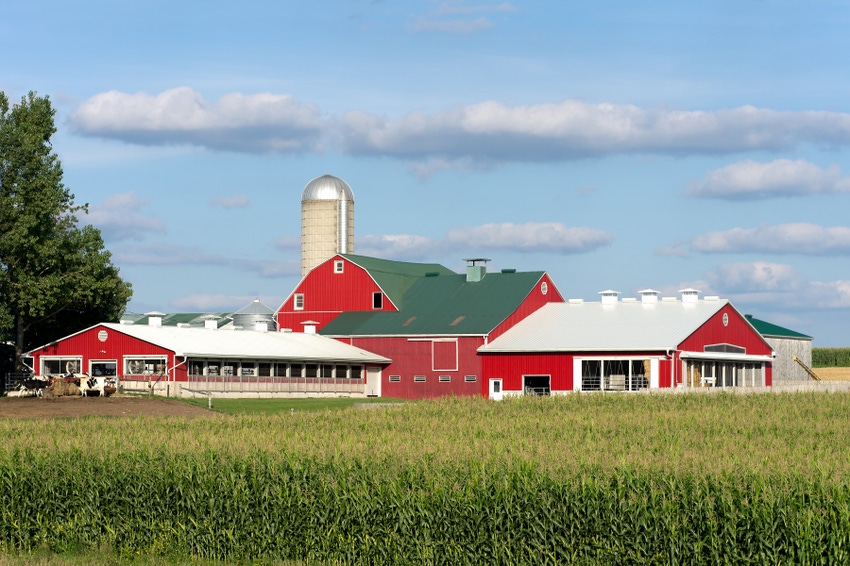Researchers to examine fate of antibiotics on beef and dairy farms while assessing heat-based manure treatment as mitigation strategy.
August 6, 2019

University of Maryland researchers are leading a multi-institution team to support farmers by understanding antibiotic resistance on beef and dairy farms, the effects on the environment and potential high-temperature treatment options to mitigate these effects, the university said in an announcement.
To further serve the farming community, researchers are partnering with farmers through extension activities to communicate the science behind antibiotic resistance, identifying current perceptions and concerns for their animals, farms and the environment, the announcement said.
Stephanie Lansing, University of Maryland associate professor in environmental science and technology, is the principal investigator for this $1.2 million grant from the U.S. Department of Agriculture due to her expertise as an agricultural engineer and extension educator in Maryland, the university said.
According to the announcement, the multifaceted project will have four major components: (1) examining the fate of antibiotics on beef and dairy farms, (2) assessing mitigation strategies for antimicrobial resistance, (3) gathering information on current perceptions about antibiotics and resistance and (4) developing a communication strategy to discuss best management strategies and research findings with the farming and food processing community, focusing on how farm viability, animal welfare and environmental stewardship intersect.
Researchers with the University of Maryland, Cornell University and USDA’s Agricultural Research Service (ARS) will be examining the fate of antibiotics on dairy farms in the Northeast and Maryland, while researchers and extension associates at the University of Nebraska-Lincoln and ARS partners will be focusing on the perspective of beef cattle ranching, the announcement said.
Lansing will help assess new high-temperature manure treatment techniques and their effectiveness in mitigating antimicrobial resistance in dairy manure by comparing them to high-temperature wastewater treatment digesters at the District of Columbia Water & Sewer Authority (DC Water). University of Maryland-Baltimore County will conduct social science research into perceptions of antimicrobial resistance, with extension faculty from all institutions helping to identify key stakeholders to best serve farmers and food processors.
Finally, Ithaca College in New York will be designing and producing communication materials for a non-agricultural target audience with a unique focus on outreach and extension.
ARS will assist with detecting antibiotics in the laboratory and quantifying antimicrobial-resistant genes and bacteria, while DC Water will provide the use of its pilot thermal hydrolysis anaerobic digestion system, which breaks down sewage waste to produce methane gas that is then converted into electric energy, the university said.
This high-heat, high-pressure process has the potential to reduce antimicrobial resistance in the environment by putting manure and bedding waste material through high-temperature treatment methods while also producing sustainable energy, Lansing noted.
According to DC Water, its current digester project reduces greenhouse gas emissions by 50,000 tons per year. This type of technology could be greatly beneficial in the agriculture industry for emission reduction while reducing antimicrobial resistance in the environment, the university said.
Lansing explained, “With the thermal hydrolysis anaerobic digestion system currently being used by DC Water, we want to know: Can we take more innovative techniques from municipal wastewater treatment and apply them to agriculture?”
She continued, “So many aspects affect antimicrobial resistance. It is possible for bacteria to spontaneously develop resistance through gene transfer without even coming into contact with the antibiotic that it is resistant to. So, there can be cases where antimicrobial resistance is evident in a farm setting, yet animals in that farm environment have not been exposed to that antibiotic. How do you convey that concept when there isn’t always a direct link between what is being used and what is seen in the environment?”
Lansing added that this is a complex issue with a lot of nuance and said she is excited by the work. “There are new regulations for farmers, and the farming community understands and follows those regulations, but they also need to treat their sick animals just like anyone would treat their own sick pet. We want to find a balance between animal welfare and environmental stewardship, and we want to do this with the stakeholders involved to convey a complicated topic in a clear format that helps farmers while reducing potential resistance,” she said.
Source: University of Maryland, which is solely responsible for the information provided and is wholly owned by the source. Informa Business Media and all its subsidiaries are not responsible for any of the content contained in this information asset.
You May Also Like

.png?width=300&auto=webp&quality=80&disable=upscale)

